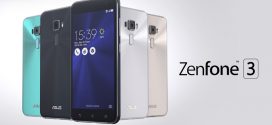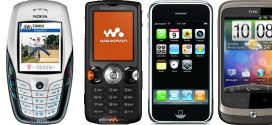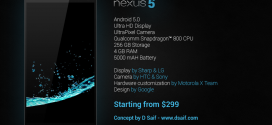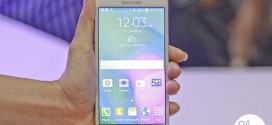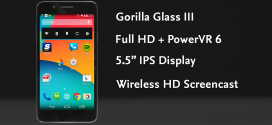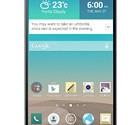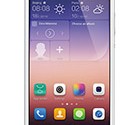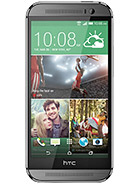 Today I’ll be telling you about the HTC One – not to be confused with the other HTC One that has been out for quite some time. This is the new HTC One, the one that just came out and is carrying the branding of M8 as well. The older version of the phone was called the HTC One M7 ( although, to be fair, the only people that knew about the existence of the M7 from the very beginning were the ones that bothered to install different software versions on their devices ). Now the HTC One M7 was a great hit for HTC – one of their best sellers for a few months, and the M8 promises to be even better.
Today I’ll be telling you about the HTC One – not to be confused with the other HTC One that has been out for quite some time. This is the new HTC One, the one that just came out and is carrying the branding of M8 as well. The older version of the phone was called the HTC One M7 ( although, to be fair, the only people that knew about the existence of the M7 from the very beginning were the ones that bothered to install different software versions on their devices ). Now the HTC One M7 was a great hit for HTC – one of their best sellers for a few months, and the M8 promises to be even better.
To not confuse people with the nomenclature of the phone, we’ll be referring to it as the HTC M8 for short from here on. Also, I don’t blame users confusing the M8 with the M7 at all, especially since the two look almost completely identical. It’s not until you hold them side by side that you notice the real differences. First off, the M8 is slightly larger than the M7 ( it has a larger screen ). Another obvious difference is that the M7 had one camera, where as this one has two ( but the design on the back of the phone is still the same, except there’s now two holes where once there was just one ).
SUMMARY
The HTC M8 does have its good and bad points to it ( but mostly there are good points, which makes it even out the balance and shift it ever so slightly towards the Good, thus making it pretty much worth its asked price – even though it is a little bit higher than I would have liked ). I have to explain that last statement – the price difference between this phone and the previous model is nearly double. While I’m sure the M7 has received a few price-cuts since it came out, I’m afraid the M8 isn’t really TWICE AS GOOD as the M7 to desever twice as much money ( but that’s just my personal opinion ). If you’ve liked the M7, though, this is kind of like it but with a few minor improvements here and there and a few downcuts that, personally, drive me nuts. There are two drawbacks that enrage me to no end: firstly, they removed the tactile buttons for Back and Home and put them on the screen ( like Nexus phones have ); the second being they removed the Beats audio-enhancements and they made some significant modifications to the camera – not altogether for the better. If you’re curious about more, feel free to read the whole deal, as I won’t spoil anything mofe in this part.
GENERAL
As far as networking goes, the HTC M8 isn’t very different from the M7 – they both have full connectivity to 2G, 3G and 4G LTE. The difference here stands with the HTC M8 having different names for the series of GSM networks that it uses depending on where you got it from and who your service provider is. However, these are quite insignificant details as this is purely on the service provider, and the user can’t really tell these networks apart or do anything in particular to affect them. It’s also worth mentioning that the type of SIM card present in this device is of Nano-SIM format ( also, it’s the type that you remove from the side somewhere, as the phone can’t be opened ). Officially, it’s out since March and available for purchase world-wide.
BODY
The HTC One M8 is a tad bigger than the M7 was, partly due to the fact that it has 5.0 inch screen ( where as the other one has a 4.7 inch one ). Therefore, its whole body is a tad larger. The specific size is 146.4 x 70.6 x 9.4 mm ( or 5.76 x 2.78 x 0.37 in ) and it weighs circa 160 g ( or 5.64 oz ). The design of the phone is similar to that of the first HTC One – the only differences being that this one is larger and has two cameras on the back.
DISPLAY
The type of screen found on this device is a Super LCD3 capacitive touchscreen with 16 million colors, a screen with a 5.0 inch size that can hold a resolution of 1080 x 1920 pixels and is equipped with a pixel density of circa 441 pixels per inch. Regarding the display part, the M8 has HTC Sense UI v6 installed on it – something that’s scheduled to be found on the M7 somewhere in the near future when it receives its update to v4.4 KitKat. Also, the screen is protected by a sheen of Corning Gorilla Glass 3. Some people are curious how well this type of screen fares against AMOLED or IPS – well, to put it bluntly: the colors are as clear as you might get, but it’s not as bright or over-saturated as the other two ( some believe that doing that actually damages the quality – and truthfully it does look somewhat clearer with a darker tone, but subjectively speaking I’d rather have that over-saturation and brightness for my phone as I really love that effect ).
SOUND
There’s good things and bad things related to the sound of the HTC M8. Since I feel like it, let’s start with the bad – where as the first HTC One ( the M7 ) had a Beats audio-enhancement installed on it, this one seems to have dropped that certain feature and doesn’t have any software-related audio-enhancements installed whatsoever. On the hardware-side, though, both of them have the same Stereo Speakers and Built-In Amplifiers.
MEMORY
Memory-wise, the HTC M8 is pretty much the same ast the M7 as far as the RAM is concerned ( they both have 2 GB of RAM ). The main difference between them is with the storage space – the M7 was available in two versions ( 32 and 64 GB ) but had no MicroSD card slot where as this one is available in two versions with slightly less internal storage space ( 16 and 32 GB ) but also has a MicroSD card slot that can use any card of up to 128 GB.
DATA CONNECTION
There are a few slight differences here regarding where you got this phone from. All the versions have GPRS and EDGE, but the main difference is the internet speed: for the 4G speed, nothing is really affected ( 150 MB/s Down and 50 MB/s Up ), but the 3G speeds seem to pretty dependent on the market ( you have 42 MB/s Down OR 21 MB/s if you get it from AT&T and all of them have the same 5.76 MB/s Up ). Also, the NFC connection is very dependent on the market or service provider from which you got the phone. Aside from those, all the versions have an Infrared Port, Bluetooth v4.0 with A2DP and Wi-Fi 802.11 a/b/g/n/ac with Wi-Fi Direct, DLNA and Wi-Fi hotspot. The USB port of the HTC M8 is a MicroUSB v2.0 ( with MHL ) that also has support for USB Host and USB On-the-Go.
CAMERA
The camera of the device is a troublesome subject. On one side, it’s seemingly better than that of the M7, but on the other side it isn’t ( I’ll get to telling you why in a second ). Firstly, the frontal camera is by far better than that of the previous HTC One: this one has a 5 MP frontal camera that can record video in 1080p at 30 frames per second and also has HDR. The controversy comes when you look at the main camera – the original HTC One had only one 4 MP camera with a 2 µm pixel size and this one has TWO of those cameras. The problem is that the original had HD Simultaneous Video and Image Recording, where as this one has Automatic Simultaneous Video and Image Recording ( which is slightly inferior in quality ). Aside from that, the camera is superior in other aspects: it records video in 1080p and 720p, both at 60 frames per second ( a feat which the previous HTC One was incapable of doing ) and has HDR ( which is present for the image part, as well ), Stereo Sound Recording and Video Stabilization. Aside from those, it also has Autofocus, Dual-LED ( dual tone ) Flash, a 1/3″ Sensor Size, Geo-Tagging, Face and Smile Detection and Panorama.
BATTERY LIFE
The battery of this phone, while it IS slightly larger than that of the M7, it will be taxed heavier due to the fact that the screen is larger ( usually that’s the biggest battery-drainer ). However, while a Li-Po 2600 mAh battery ca ensure a pretty decent battery life, the Non-Remove-able part still drives me crazy ( I can’t possibly tell you how much I hate not being able to open a phone up ). The alleged battery life is circa 270 hours of stand-by and 14 hours of talk-time, though in all seriousness: I wouldn’t really expect it to hold its charge longer than the M7 holds his.
HARDWARE
Again, this is one of the more controversial things about the One M8. There are those that claim the processor of the device is the only thing that it has better than the previous model ( which, from a biased point of view might be true – we all choose what we want to perceive as wrong and right ). Nonetheless, the processor is superior, but it’s very differently clocked depending on where you get it from. The processor is the same Quad-Core Krait 400 processor, however, it’s clocked at 2.3 GHz for US / EMEA and at 2.5 GHz for Asia and China. The rest of the components stayed the same – a Qualcomm Snapdragon 801 chipset and an Adreno 330 GPU.
SOFTWARE
Software-wise, there’s nothing to reproach to the HTC M8 as it has the latest version of Android on it – v4.4.2 KitKat – a version which the previous HTC One is said to also receive somewhere in the nearby future ( there’s no official date as to when exactly, though ).
FEATURES
The features of the HTC M8 are pretty numerous: it has a lot of sensors ( Accelerometer, Gyro, Proximity, Compass and Barometer ), it uses HTML5 for the browser, it has Stereo FM radio with RDS, the messaging on it is done through the standard ways ( SMS with threaded view, MMS, E-Mail and Push E-Mail ) and last, but most certainly not least, its GPS has support for both A-GPS and GLONASS. You can get this phone in a few different colors, the main ones being: Gunmetal Gray, Glacial Silver and Amber Gold.
Here’s a brief list of the things the HTC One M8 is capable of:
- SNS integration
- Google Drive (50 GB cloud storage)
- Active noise cancellation with dedicated mic
- TV-out (via MHL A/V link)
- DivX/XviD/MP4/H.263/H.264/WMV player
- MP3/eAAC+/WMA/WAV/FLAC player
- Google Search, Maps, Gmail, YouTube, Calendar, Google Talk
- Organizer
- Document viewer/editor
- Photo viewer/editor
- Voice memo/dial/commands
- Predictive text input
This concludes our little review of the HTC One M8. If you like the phone and are interested in getting one for yourself, you can get find some decent prices for it HERE. This has been it for this phone – I hope you’ve enjoyed reading it as much as I did writing it and that you’ve learned a few thing about this phone. I tried keeping it as short as possible so as not to go into too many unnecessary or boring details, yet still cover everything there was to cover.


